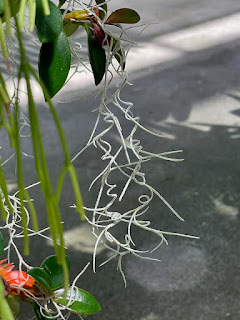First trip to Europe in seven years complete! Over eleven days, putting down anchors in Ansó in the far west Pyrenees, Zaragoza and Sant Cugat in the outskirts of Barcelona, we saw a lot. My already ambitious plan was to cross paths at least with legacies Roman and Islamic, romanesque and gothic, baroque and modernismo, but we got even more - starting with neolithic dolmens and ending with a still-growing sci-fi cathedral. And a plan for high mountains and plains grew to include several waves of Pyrenees, Montserrat and a short trip to seaside Sitges, too!
What impressed itself on me also was that no spot (with the possible exception of the Castillo de Loarre) belonged to just one era. Why should it? Even as empires and their dominant religions change, most people stay, useful and powerful sites remain useful and powerful, and many building materials lend themselves to reuse. But of course the story is more complicated than this irenic description would suggest.
Take Zaragoza, which today celebrates its "four cultures" - Iberian, Roman, Muslim and Christian. These exquisite arches are part of the 11th century core of one of its marvels, the Aljaferia, highlight of the UNESCO World Heritage Mudejar Architecture of Aragon, reconstructed after half a millennium's absence. These "cultures," while doubtless at every point more cosmopolitan than cultural nationalists today can imagine, really name chronological eras, each of which coopts or effaces its predecessors in its story.Zaragoza's lovely cathedral La Seo sits on the site of the city's main mosque, which in turn replaced the central temple of the Roman city of Caesaraugusta - which surely built on something yet older. Today's it's presented as an almost teleological sequence. The "mudejar" brickwork of part of the cathedral, constructed by Muslim artists who stayed (what the 19th century neologism mudejar means) when the Christian era began, makes it seem an almost friendly transition. But its prominent chapel for Saint James, patron saint of the Reconquista, is framed by huge 17th century statues of Moorish-looking prisoners writhing in chains.
None of this is new, or should be surprising. What I needed to return to Europe to remember is that, for all the violence of historical conflict and usurpation, there is a sense of historical depth in which the older constellations remain in some obscure way present, whether acknowledged or not. Call it karma, or just history? To me the four huge towers at the corners of Zaragoza's enormous baroque Basilica de Nuestra Señora del Pilar (the towers constructed only in the last century or so) make it look mosque-like, though that was certainly nobody's intention. This would be a pleasing irony for a place which, as the site where Jesus' mother Mary is said to have appeared to the apostle James in 40 CE, has asserted Christianity's special claim to Spain from before there even was an Islam - or Christianity!Reflecting on it now, this all seems interesting but unsurprising. I tell students stories all the time about the enduring effects of historical and cultural context and about the constructedness of historical narratives pretending to transcend this messiness. Surprising is the touristic naivete of which it made me aware. How could I have thought one could dip into distinct centuries in distinct places? Any old cathedral presents you with the cohabitation of many centuries at once! Yet it took me a while to get over irritation that each of the places we visited had been built and rebuilt multiple times, to accept and enjoy that there was never one authentic form for any of these significant places.
This holds even for the Sagrada Familia in Barcelona, which is celebrated as the work of Antoni Gaudí but is less and more than that. Gaudí took over a project already underway (now the crypt) and developed a concept for the new edifice which went through several iterations during the decades he devoted to it. But he knew cathedrals take a long time, and that only part of it could be completed in his lifetime. (The current plan is to complete the work by next year, the centennial of Gaudí's death.) Would he have approved of the expressionist sculptures Josep Maria Subirachs - working with Gaudí's original sketches - carved for the Passion Gate in the 1990s? Or Joan Vila Grau's luminous tapestries of stained glass, even more recent? I'm pretty sure he'd be psyched that there's a 3-D printer in use in the workshop, helping make the remaining towers even more diaphanous.
I wonder what will happen once the construction finishes, fifty or one or two hundred years after that. As a living thing, Gaudí wouldn't want his cathedral to be preserved in amber, would he? The karmic residues of distant and half-forgotten pasts, encountered in the built environment all around, make the future here a more complicated and less foreign prospect than it seems in the ahistorical presentism of the "new" world.
























.jpeg)











.jpeg)
.jpeg)











